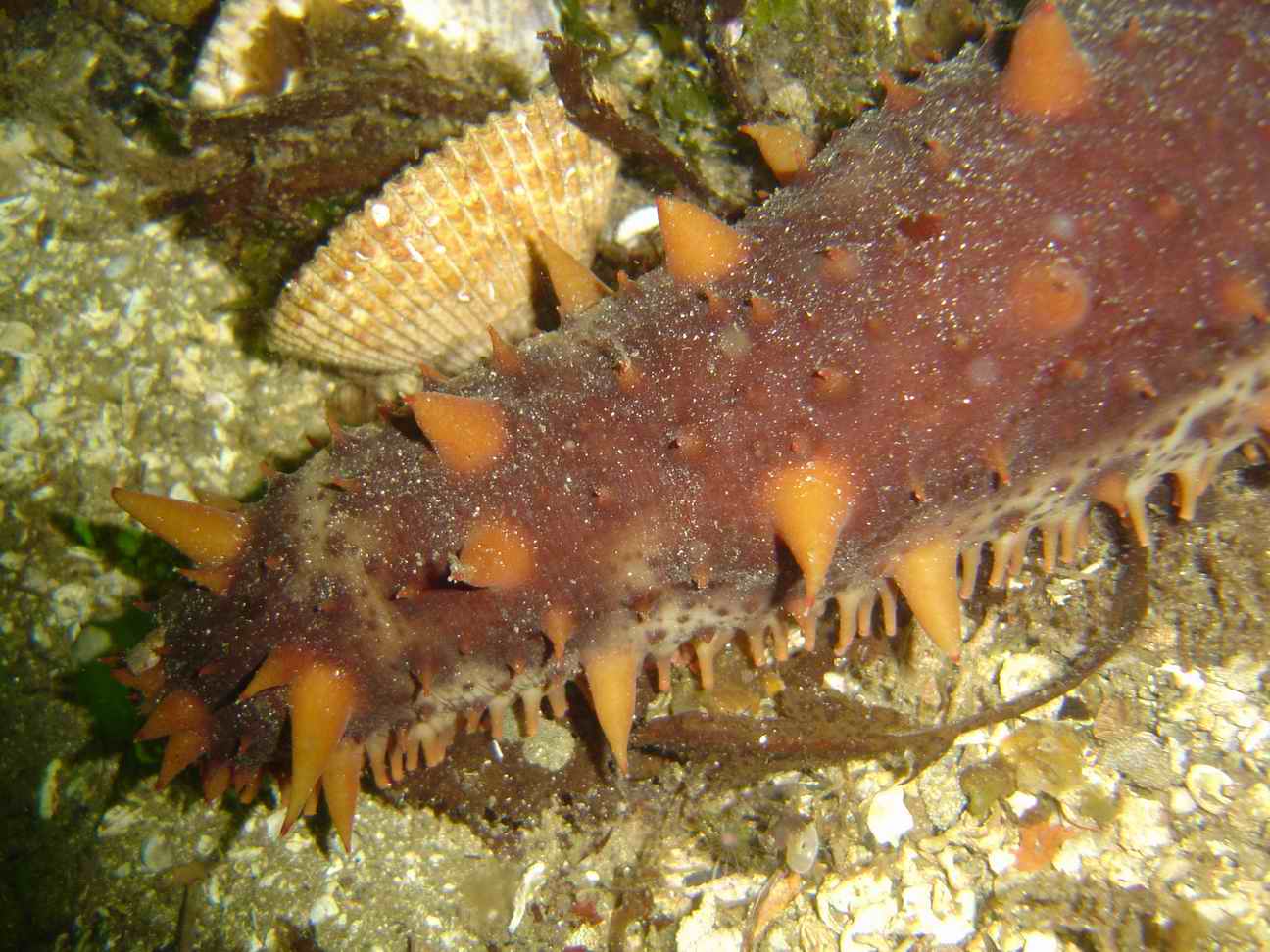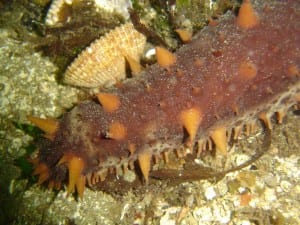Two lucrative dive fisheries get underway in Southeast this month. Divers are expecting good prices for geoduck clams and sea cucumbers, two bottom dwelling sea creatures sold to Asian markets.
For iFriendly audio, click here:
Openings for geoduck clams are happening one day a week, with the first one on October 3rd. Fishing time will be shorter this year at least in the early season.
“The geoducks all go to a live market so you can’t flood the market or it drives the price down” said Phil Doherty, executive director of the Southeast Alaska Dive Fisheries Association. That’s an industry group based in Ketchikan with a committee of divers and processors involved in the clam fishery. “Normally our fisheries are on Thursdays, one day a week and normally they’ve been six hours a day. But the geoduck committee has decided to try and reduce our early season harvest so we’re only going to be fishing three hours on the first three weeks of the season, on the Thursdays. So we’ll cut our time in half.”
Doherty says SARDFA is hoping to see a weekly harvest of 25,000-35,000 pounds in the early season, when the bulk of competing product from Washington state and British Columbia is also sent to market.
The clam fishery has an overall guideline harvest level of 583,000 pounds this year. Different areas of Southeast are fished on a rotating basis so the GHL can fluctuate based on which areas are open. The total harvest last year was nearly 800,000 pounds. The average price last year was $6.88 cents a pound. Doherty said divers are hoping for a price in the 8-12 dollars a pound range this season. “We do anticipate a good price,” he said. “The guideline harvest level is down a little bit this year from our normal rotation. So we’re hoping to make up in ex-vessel value what we’ve lost in the guideline harvest level.”
The fishery has been a lucrative one for the nearly 70 divers making landings in Southeast. “The estimated ex-vessel value for the last three years 2010,11 and 12 has been in the ballpark of five million to almost six million dollars, with an average price per pound ranging from about six dollars and 60 cents to almost ten dollars and 43 cents in 2011,” said Mike Donnellen, the Alaska Department of Fish and Game’s project leader for dive fisheries stock assessment.
Clams are tested on a weekly basis for paralytic shellfish poisoning to determine which areas can open. That toxin can impact how quickly the fleet harvests the GHL.
The fishery also continues to see impacts from sea otters eating geoduck clams. Donnellen said one area west of Prince of Wales Island was not opened this year after a dive survey showed low numbers of clams. “During our dive surveys of Port Real Marina we did witness a great deal of circumstantial evidence of sea otter predation including broken geoduck shells and just not much life in general.”
The bulk of the quota is normally caught in October, November and December. A separate fishery in the Sitka area was wrapping up in September.
Meanwhile another dive fishery starting in October harvests sea cucumbers, slow moving, bottom-feeding sea creatures shaped like their vegetable name sake.
There’s more effort in the cucumber fishery with about 150 divers making landings and the last few seasons have gone more quickly than diving for geoducks. Fish and Game’s Donnellen called the cuke fishery a success story with increased quotas. “We have a three year fishery rotation for sea cucumbers and for the 2013-14 season, it’s actually the highest quota that has been set for these areas since 2000,” he said.
Areas are fished then left alone for two years, so the three year rotation impacts the annual GHL for the fleet. This year it’s nearly one and a half million pounds which SARDFA’s Doherty called a pretty good number for the areas open. “So this is a little bit above the last year rotation,” Doherty said. “There were a couple of areas, especially on the east side of Prince of Wales that seemed to have good recruitment and good growth of sea cucumbers this year. Again we did lose a couple areas on the west coast of Prince of Wales, the Craig area, that will not open this year because of sea otter predation. So we were fortunate that we had good production in some other areas but we continually lose ground to sea otters.”
The fishery was worth about seven and a half million dollars for the price paid to divers at the dock last year, just under five dollars a pound. Doherty said the fleet is hoping for a good price again. “Well the cucumber market sounds good going into the season. Again I haven’t heard and no ones talked about a final price yet but I think if we get $4-4.50 a pound, that’d be a good price for the guys up here.”
There’s one other fishery that also starts up in October, red sea urchins. It has a guideline harvest level of over three million pounds but has seen very little interest in the past few years.











